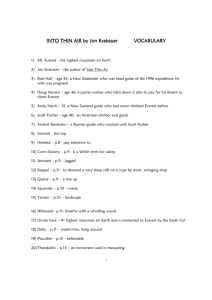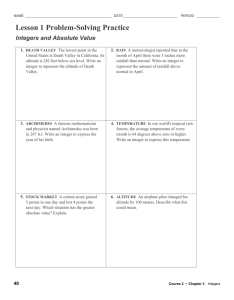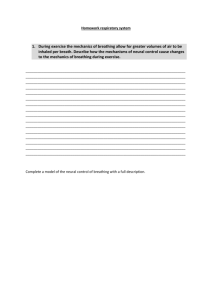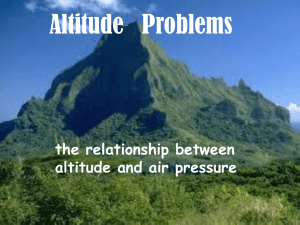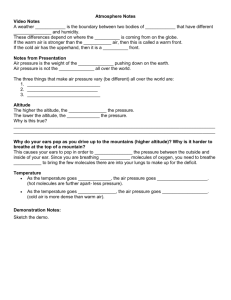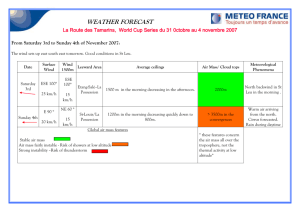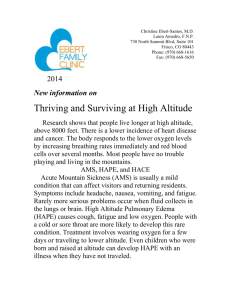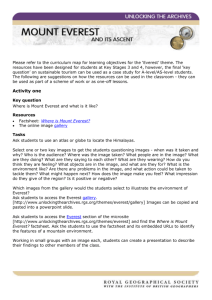Mt. Everest (high altitude) Video
advertisement
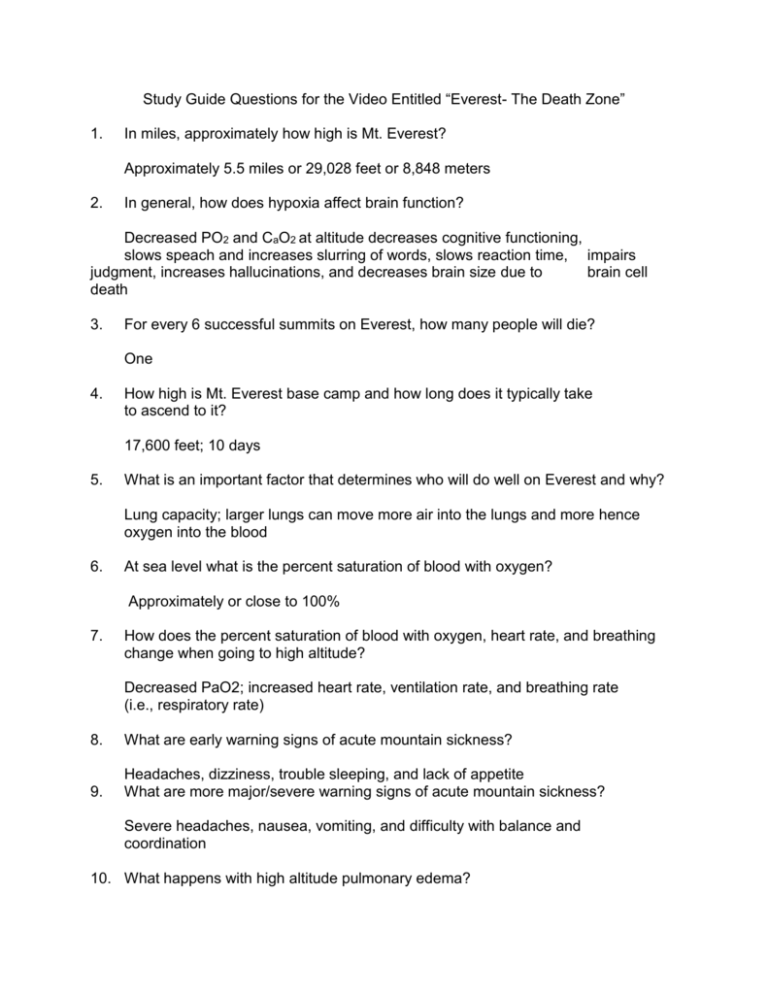
Study Guide Questions for the Video Entitled “Everest- The Death Zone” 1. In miles, approximately how high is Mt. Everest? Approximately 5.5 miles or 29,028 feet or 8,848 meters 2. In general, how does hypoxia affect brain function? Decreased PO2 and CaO2 at altitude decreases cognitive functioning, slows speach and increases slurring of words, slows reaction time, impairs judgment, increases hallucinations, and decreases brain size due to brain cell death 3. For every 6 successful summits on Everest, how many people will die? One 4. How high is Mt. Everest base camp and how long does it typically take to ascend to it? 17,600 feet; 10 days 5. What is an important factor that determines who will do well on Everest and why? Lung capacity; larger lungs can move more air into the lungs and more hence oxygen into the blood 6. At sea level what is the percent saturation of blood with oxygen? Approximately or close to 100% 7. How does the percent saturation of blood with oxygen, heart rate, and breathing change when going to high altitude? Decreased PaO2; increased heart rate, ventilation rate, and breathing rate (i.e., respiratory rate) 8. What are early warning signs of acute mountain sickness? 9. Headaches, dizziness, trouble sleeping, and lack of appetite What are more major/severe warning signs of acute mountain sickness? Severe headaches, nausea, vomiting, and difficulty with balance and coordination 10. What happens with high altitude pulmonary edema? Blood vessels in lungs leak fluids into lungs and the alveoli fill with fluid decreasing PAO2 and SaO2, which can lead to the coughing of pink sputum and possibly death 11. At what altitude does the body start to deteriorate and what are some of the basic ways in which the body deteriorates? 17,000 feet; muscle wasting and decreased body weight as the body consumes itself for energy 12. At what altitude is known as the “Death Zone” due to the rapid deterioration of the body? 26,000 feet as the body cannot acclimatize to this altitude 13. What conditions of the climber prior to the final ascent makes it amazing that the climber can reach the summit of Mt. Everest? Lack of sleep, food and water; difficulty breathing due to dry membranes and coughing; headaches and sore throat; take a lot will to keep going 14. What happens to resting as well as exercise heart rates as you go higher and higher in elevation and how does this affect human performance? Increased resting and exercise heart rates bring them closer to maximal rate, which may possibly decrease at high altitude 15. Does acute high altitude affect brain size and brain functioning? How? Mild atrophy of the brain and decreased brain functioning heart


